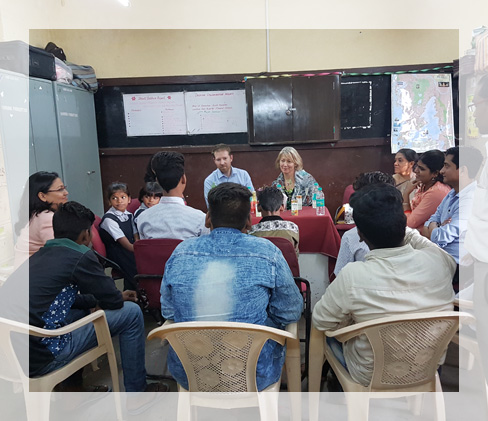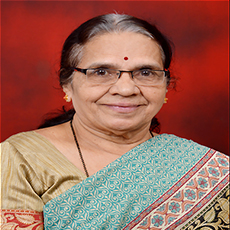
Hamara Foundation initially started as "Hamara club" in July 1989 as a field action project of Tata Institute of Social Sciences (TISS) by Prof. Asha Rane in response to the emerging problems of street children in the city of Mumbai.
The primary goal of Hamara Foundation is to empower children on the street so that they have a chance of a better quality of life. Major objectives include reaching out to street children and homeless children, providing them with need based services for their growth and development, and creating public awareness about issues pertaining to street children and homeless children.
Hamara Foundation has witnessed a lot of ups and downs, but continued to persist and strive towards its goal of empowering street children. Several projects are launched for development and enablement of the most vulnerable and marginalized group of children and underprivileged communities to help them attain a sustainable lifestyle.
One day workshop on the theme "Street Children an Experience in Mumbai was conducted at Tata Institute of Social Sciences (TISS) in 1989. This was followed by the inception of Hamara Club as a field action project of TISS on 4th July, 1989.
2nd Phase period of Turmoil (1995 to 1997):
Save The Children, Canada discontinued funding in 1995 as per its policy. The funding was then available from Department of Social Justice and Empowerment, Government of India under its Scheme for Welfare of Street Children. Very poor funding for the salary of staff, inability to continue existing staff as per the requirements of the Scheme, writ petition of dismissed staff in the High court etc. affected the functioning of the organization adversely.
3rd Phase Consolidation (1998 to 2001):
Initiation of new projects, placement of TISS students for field work, expansion of Contact Centers and the scope of activities for children. Increasing networking and Public Relations.
4th Phase Delinking from TISS (2002- 2010):
Field Action Project Hamara Club became an Independent NGO as Hamara Foundation. Expansion of Board of Trustees, Launching new three projects and involvement in 2012 various campaigns organized in Mumbai from time to time.
5th Phase widening Horazons (2011 onwards): Registration under FCRA, 1976, Initiation of two projects run by foreign funding. Launching strategic plan and increasing credibility and reputation as the leading organization working for the cause of Street Children.

I feel enriched and rewarded to look at the growth and development of Hamara Foundation over a period of 28 years. Started as TISS field action project for Street Children by me in 1989 with 50 children and two staff and now it functions as NGO with 400 children and more than 30 staff.
The significant growth of the organization could not be possible without active support of many individuals and agencies including Tata Institute of Social Sciences, Save the Children Canada, Ministry of Women and Child Development, Govt. of India, Child India Foundation, Save the Children India, Bruhan Mumbai Municipal Corporation, Action Aid, ABN AMRO Banking and Tiny Miracles Foundation, Netherlands, Trustees and staff of Hamara Foundation and of course our beloved beneficiaries.
I wish my dream of no child on streets of Mumbai and every child enjoys happy childhood with dignity and respect will come true in near future. Your helping hands will go a long way in fulfilling my dream.
My grateful thanks to all those who are associated with Hamara Foundation in one way or other.
– Prof.Asha Rane

To ensure that no child should live on the street and that every child has an inherent right to dignity and respect. The organization believes in working towards creating the environment in which every child enjoys rights to survival, development, protection and participation and a happy childhood.

To work towards facilitating all round growth, development and empowerment of the street children and to catalyze an overall improvement in their lives. Situation with a larger purpose of creating public awareness and sensitivity amongst the masses regarding the growing phenomenon of street children.

GOAL: The overall Goal is Development and Empowerment of the most vulnerable and marginalized group of society.
OBJECTIVES: To reach out children on the streets, pavement dwellers and underprivileged community in the selected geographical area.
To gain an insight into their specific problems and needs.
To provide various services for their development and empowerment
To organize awareness programs to sensitize the public at large about issues of street and underprivileged children.